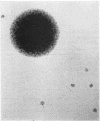Abstract
Ford, Denys K. (University of British Columbia, Vancouver, Canada). Culture of human genital “T-strain” pleuropneumonia-like organisms. J. Bacteriol. 84:1028–1034. 1962.—The conditions under which “T-strain” pleuropneumonia-like organisms, as described by Shepard, are best cultured were investigated. The organisms were found to grow on several types of nutrient agar and broth, of which PPLO medium supplemented with yeast extract and horse serum was the simplest. Subculture was possible through broth cultures, provided the broths were not incubated longer than 16 hr. The organisms on agar required either Fortner's anaerobic atmosphere or 10% CO2, but broth cultures grew aerobically. “T-strains” grew over a pH range of 6.8 to 7.8, and a temperature range of 30 to 36 C. They were viable after storage for 16 days at 4 C and for 90 days at −20 C, and they resisted lyophilization. They were sensitive to 1.5 μg per ml of tetracycline and streptomycin, but were resistant to ampicillin and penicillin. Quantitative studies showed maximal concentration in broth of 106 to 107 organisms per ml, and logarithmic multiplication for the first 12 hr of broth culture, with a subsequent rapid decline in number. Colonial morphology was maintained after numerous subcultures.
Full text
PDF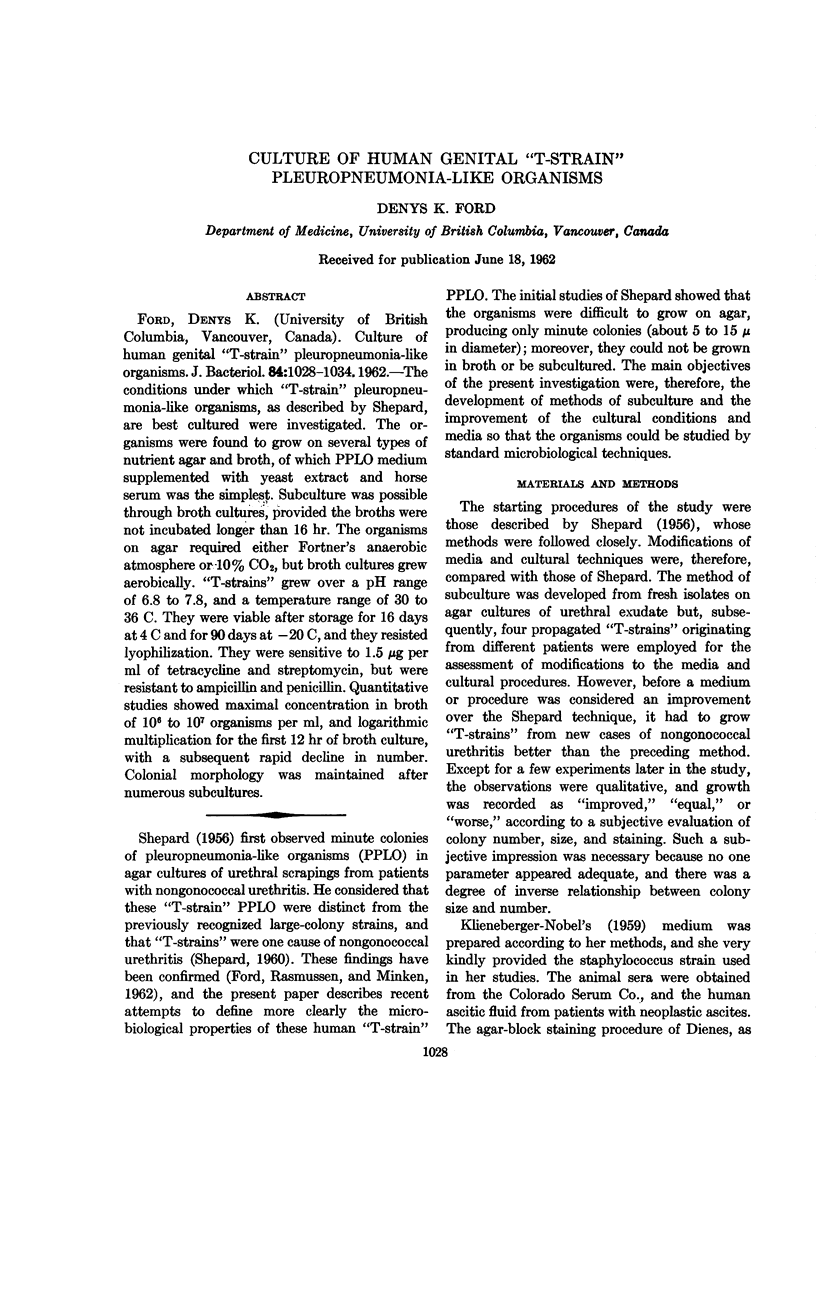
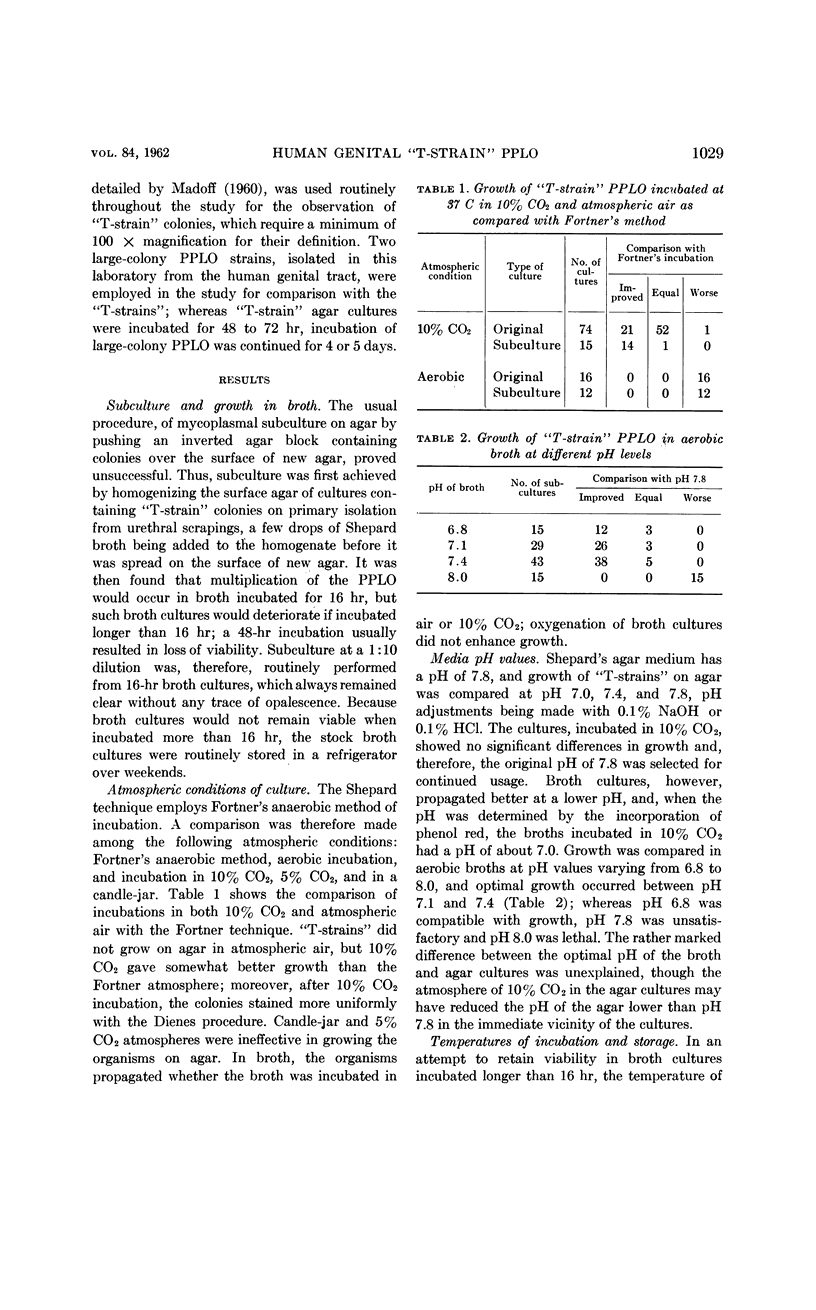
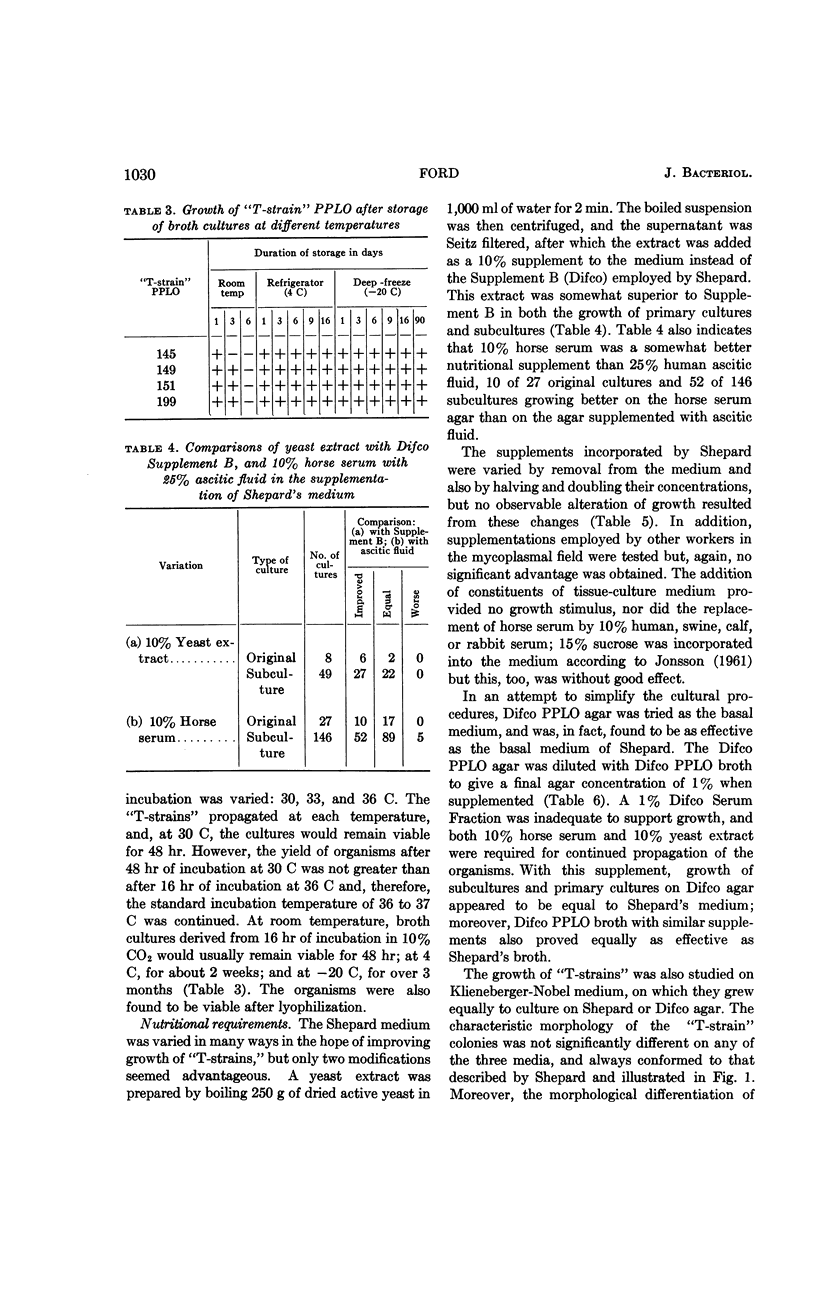
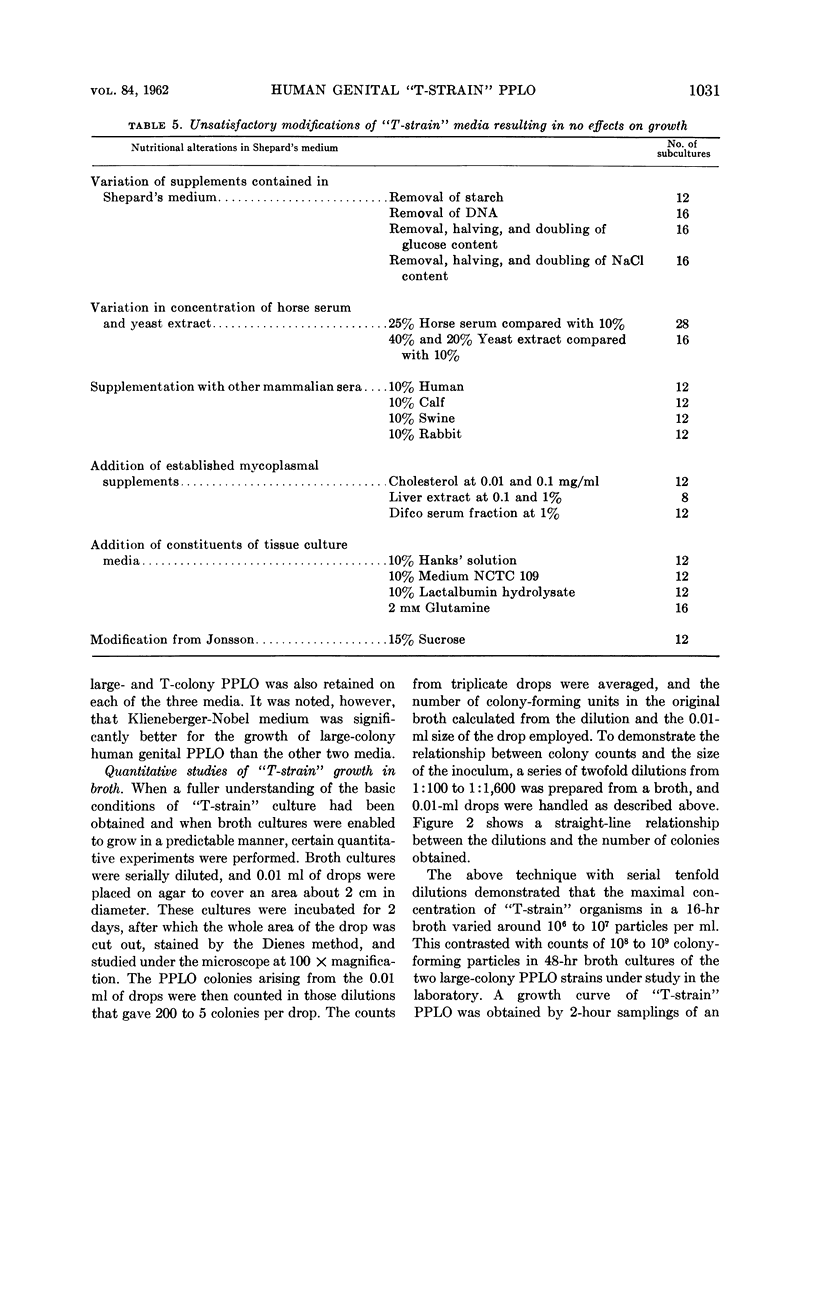
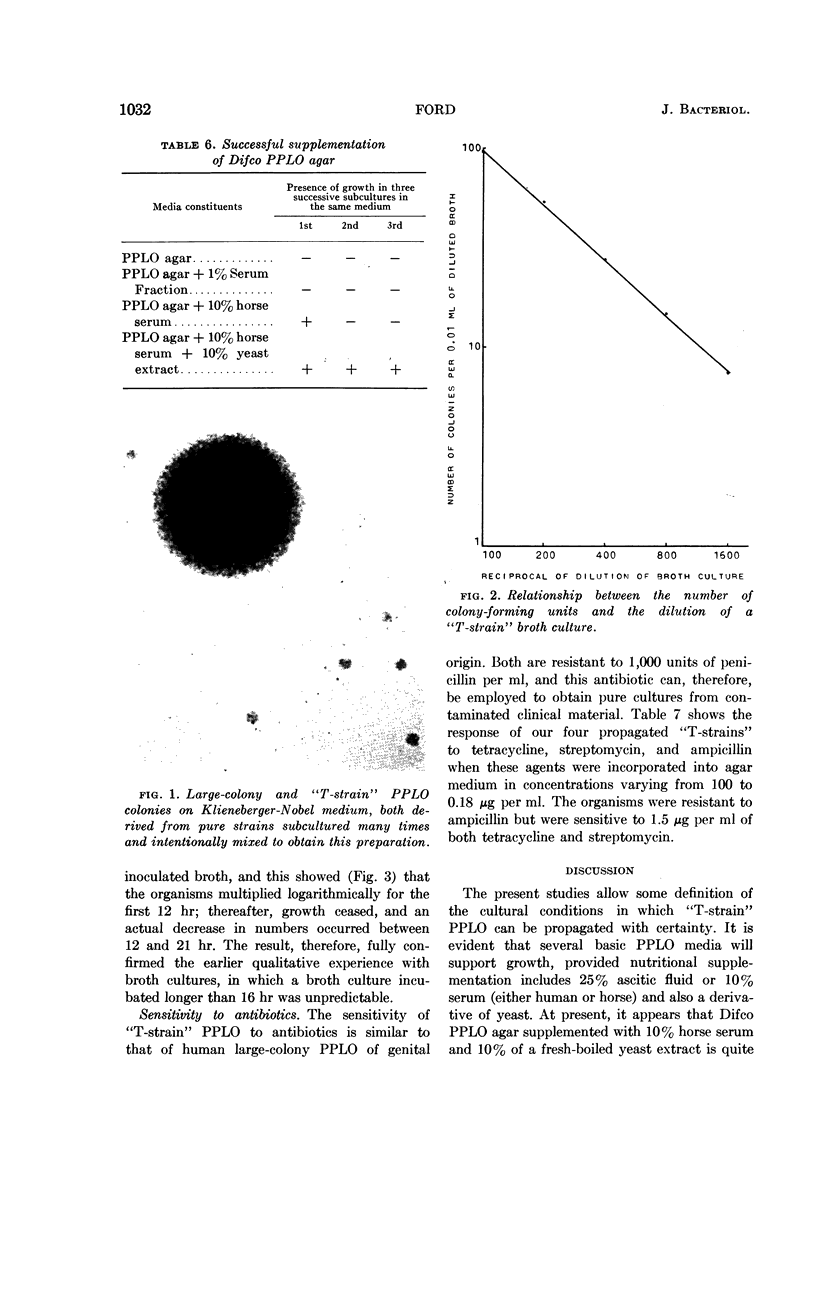
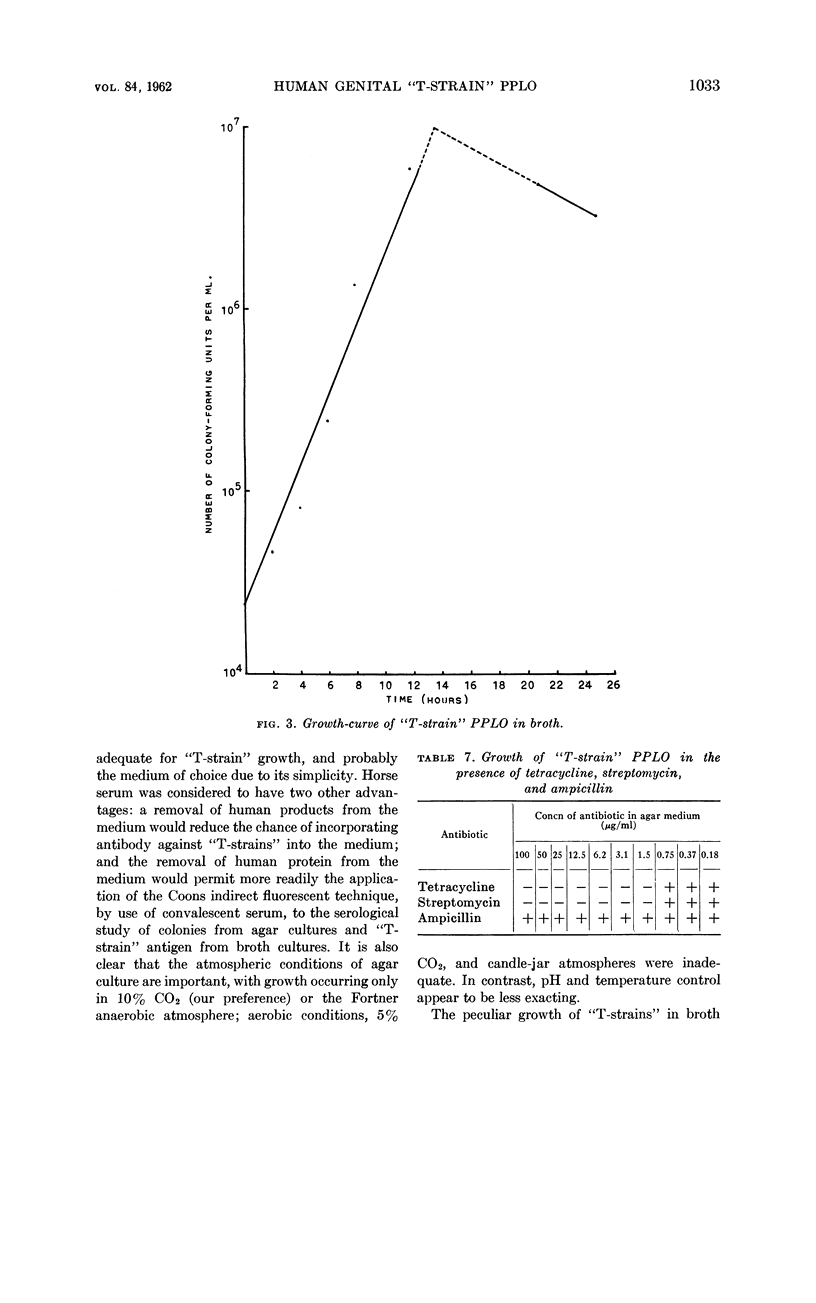
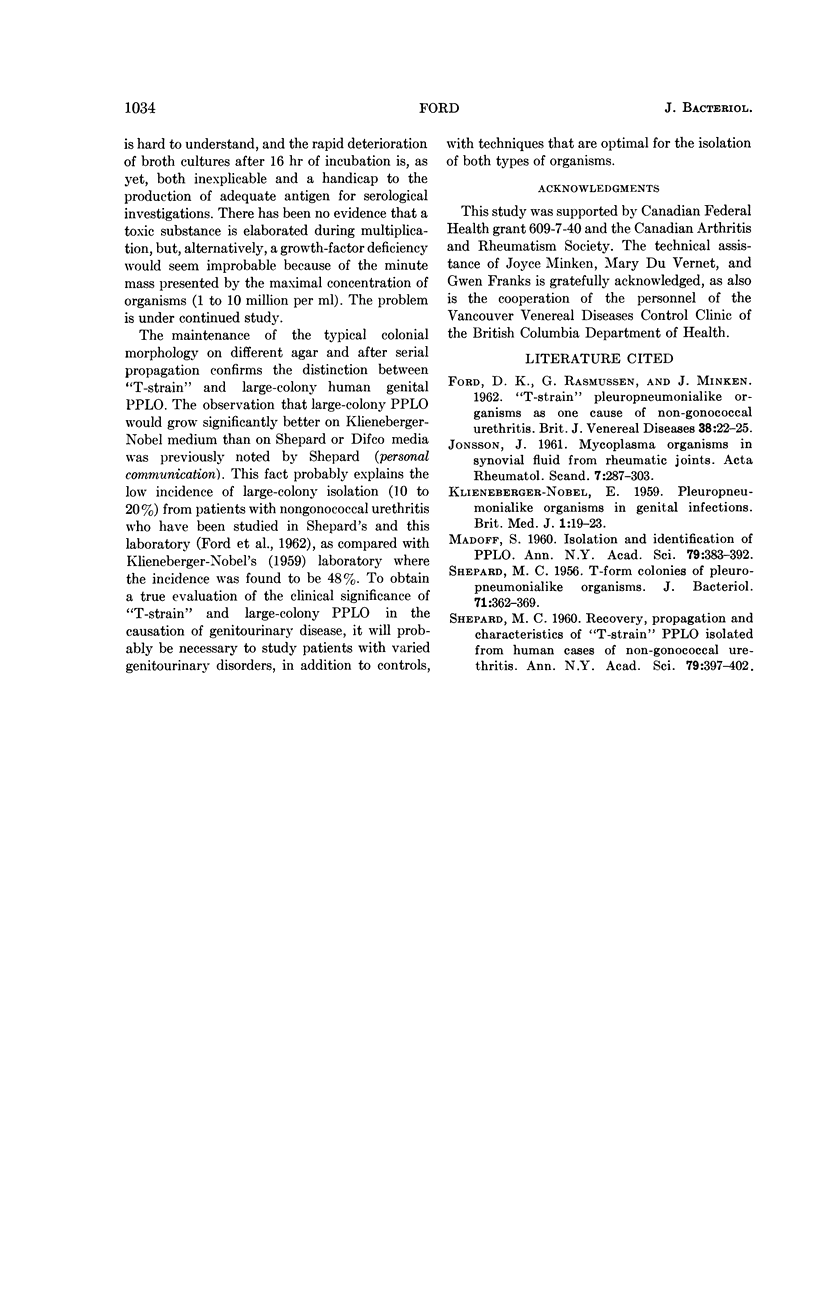
Images in this article
Selected References
These references are in PubMed. This may not be the complete list of references from this article.
- FORD D. K., RASMUSSEN G., MINKEN J. T-strain pleuropneumonia-like organisms as one cause of non-gonococcal urethritis. Br J Vener Dis. 1962 Mar;38:22–25. doi: 10.1136/sti.38.1.22. [DOI] [PMC free article] [PubMed] [Google Scholar]
- JONSSON J. Mycoplasma organisms in synovial fluid from rheumatic joints. Acta Rheumatol Scand. 1961;7:287–303. doi: 10.3109/rhe1.1961.7.issue-1-4.47. [DOI] [PubMed] [Google Scholar]
- KLIENEBERGER-NOBEL E. Pleuropneumonia-like organisms in genital infections. Br Med J. 1959 Jan 3;1(5113):19–23. doi: 10.1136/bmj.1.5113.19. [DOI] [PMC free article] [PubMed] [Google Scholar]
- MADOFF S. Isolation and identification of PPLO. Ann N Y Acad Sci. 1960 Jan 15;79:383–392. doi: 10.1111/j.1749-6632.1960.tb42702.x. [DOI] [PubMed] [Google Scholar]
- SHEPARD M. C. Recovery, propagation, and characteristics of T-strain PPLO isolated from human cases of nongonococcal urethritis. Ann N Y Acad Sci. 1960 Jan 15;79:397–402. doi: 10.1111/j.1749-6632.1960.tb42704.x. [DOI] [PubMed] [Google Scholar]
- SHEPARD M. C. T-Form colonies of pleuropneumonialike organisms. J Bacteriol. 1956 Mar;71(3):362–369. doi: 10.1128/jb.71.3.362-369.1956. [DOI] [PMC free article] [PubMed] [Google Scholar]



